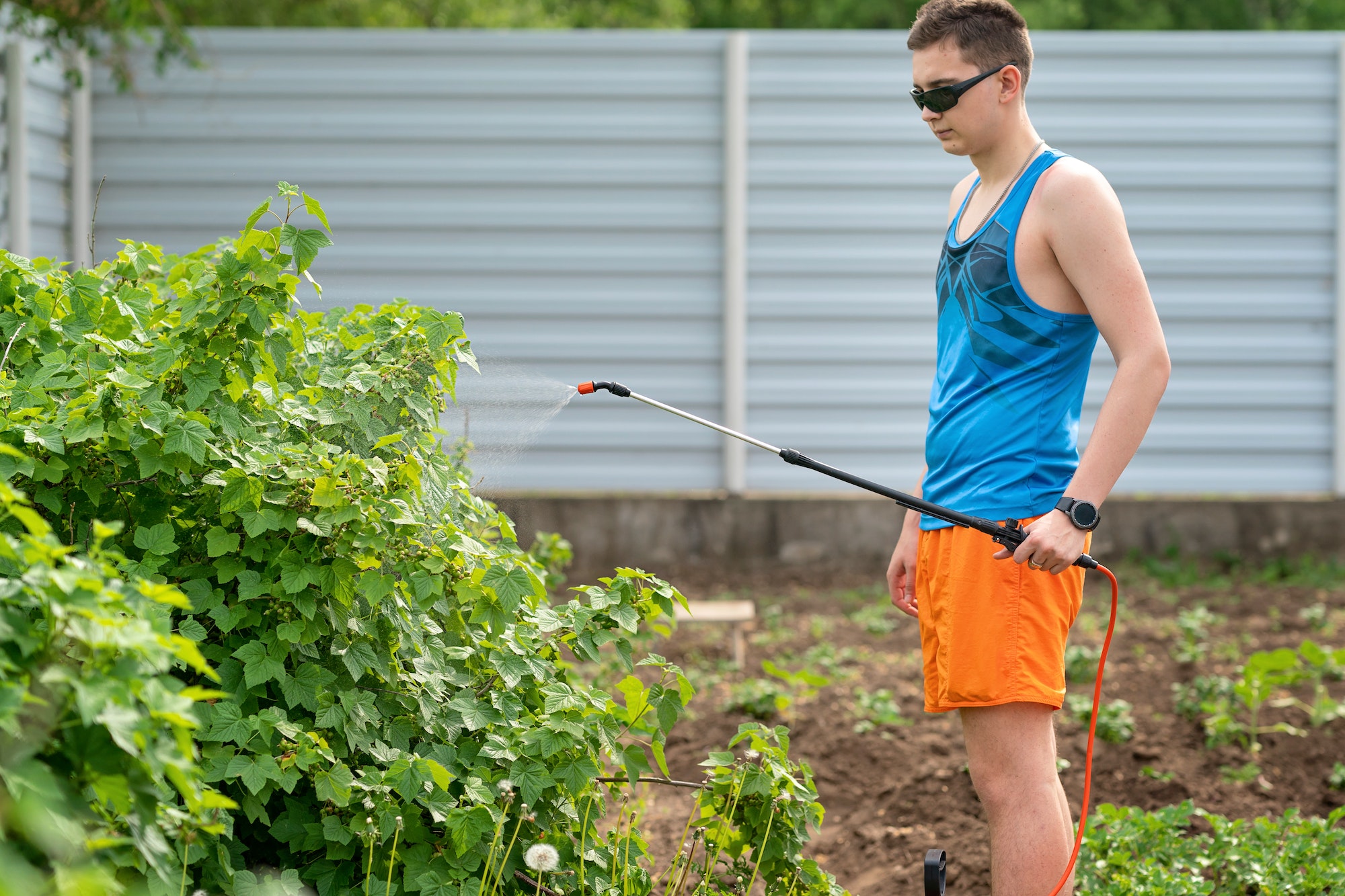Table of Contents
Master the art of pruning fruit trees: your guide to a beautiful and productive orchard
Fruit trees are a beautiful addition to any garden, providing aesthetic appeal and delicious produce. However, fruit trees require proper care and maintenance to thrive like ornamental trees. Pruning is an essential aspect of fruit tree care that promotes fruit production and prevents diseases if done correctly. We have compiled a guide to help you prune your trees like a pro.
Step 1: Removing The Dead, Damaged, And Diseases Wood
- The first step in tree pruning is removing dead, damaged, or diseased wood, commonly known as the three D’s. Deadwood is easy to spot as it is dry, brittle, and lacks leaves or buds. Damaged wood may have broken or split branches, while diseased wood may show signs of discoloration, fungus growth, or cankers. Removing the three D’s will improve the tree’s appearance and prevent the spread of diseases and pests.
In addition to the three D’s, you should also look for sprouts growing from the base of the trunk, which are called suckers. Remove suckers as close to the trunk as possible to prevent regrowth. Also, look for water sprouts and erect, perfectly vertical branches that grow from the tree’s main branches. Water sprouts may look healthy but divert the tree’s energy from producing fruit and should be removed. Finally, when making clean-up cuts, it’s essential to prune the branches back to the larger limb they’re growing from rather than leaving little stubs, which can lead to disease and insect infestation.
Step 2: Thinning Out The Tree
- After the clean-up cuts, the next step in pruning your fruit tree is thinning the interior. This involves removing limbs growing towards the tree’s interior or growing downward. These types of branches tend to shade the tree’s interior, limiting air circulation and sunlight, which can lead to disease and reduced fruit production. Additionally, remove limbs that have an angle greater than 45 degrees to the limb they are attached to. Limbs with steep angles are more prone to limb failure under the weight of fruit, especially in windy conditions.
A good rule of thumb is to look at the branch attachment point and imagine a clock face. Anything between 10 and 2 is an ideal angle for a limb to be attached to the trunk. When making cuts to thin out the tree’s interior, it’s essential to avoid removing too much foliage at once. Removing too many branches can affect a tree’s growth and fruit production in the future. A good approach is to remove no more than a third of the interior growth each year, gradually thinning out the tree over time.
Step 3: Reducing The Height Of The Tree Canopy
 The final step involves reducing the height of the tree’s canopy. It’s important to remember that fruit trees are not shade trees, and a tall and wide canopy is undesirable. A lower canopy height allows for easier and safer harvesting of the fruit. If your tree is mature and requires a ladder for pruning, be sure to take extra caution to avoid falls and injuries.
The final step involves reducing the height of the tree’s canopy. It’s important to remember that fruit trees are not shade trees, and a tall and wide canopy is undesirable. A lower canopy height allows for easier and safer harvesting of the fruit. If your tree is mature and requires a ladder for pruning, be sure to take extra caution to avoid falls and injuries.
To reduce the height of the crown, you should head off 20-35% of last year’s growth, pruning back to an established limb or a bud that faces the direction you want a new limb to develop. This will encourage new growth and the development of strong and productive limbs.
If you are looking for the best pruning and tree removal services for your trees, contact American Tree Experts Inc today. We are a group of tree experts working in Montclair, New Jersey. Call us today at 973-744-6091, and we will give you a fantastic quote for free.



 Pest problems can occur year-round, but each season brings different pests. For example, during the summer, you might notice an increased presence of small animals in your trees, such as squirrels or bird nests. Also, hornet nests can be problematic, especially in early to mid-summer. The summer months can also bring out other pests like the poplar borer, which can cause significant damage to your trees.
Pest problems can occur year-round, but each season brings different pests. For example, during the summer, you might notice an increased presence of small animals in your trees, such as squirrels or bird nests. Also, hornet nests can be problematic, especially in early to mid-summer. The summer months can also bring out other pests like the poplar borer, which can cause significant damage to your trees.
 Staying vigilant throughout the tree removal process is crucial to ensure safety. Having multiple people present during the process can provide multiple sets of eyes and ears to identify potential dangers. In addition, maintaining communication among them is necessary to ensure the safe removal of the tree.
Staying vigilant throughout the tree removal process is crucial to ensure safety. Having multiple people present during the process can provide multiple sets of eyes and ears to identify potential dangers. In addition, maintaining communication among them is necessary to ensure the safe removal of the tree.
 Mature trees may have weakened sections that could fail, causing harm or damage. For example, a large hollow in the trunk can significantly compromise the tree’s ability to withstand strong winds. Cracks or splits at the junction of branches or stems can also indicate potential failure.
Mature trees may have weakened sections that could fail, causing harm or damage. For example, a large hollow in the trunk can significantly compromise the tree’s ability to withstand strong winds. Cracks or splits at the junction of branches or stems can also indicate potential failure.
 Overuse of chemical pesticides can lead to pest populations developing resistance. IPM helps prevent this by using various management methods that target pests differently.
Overuse of chemical pesticides can lead to pest populations developing resistance. IPM helps prevent this by using various management methods that target pests differently.
 Improper planting can lead to issues with tree health in the future. For example, problems such as inadequate sunlight or excessive sun exposure,
Improper planting can lead to issues with tree health in the future. For example, problems such as inadequate sunlight or excessive sun exposure, 
 When placing the plant in the hole, keep the rootball intact and prevent the roots from drying out. Carefully place the rootball in the hole so that the trunk flare is above the existing grade by 1-2 inches. After placing the plant in the hole, remove all non-biodegradable materials, such as rope, twine, burlap, and plastic. Ensure that no protruding points of wire are left, as they could cause injury to people or pets.
When placing the plant in the hole, keep the rootball intact and prevent the roots from drying out. Carefully place the rootball in the hole so that the trunk flare is above the existing grade by 1-2 inches. After placing the plant in the hole, remove all non-biodegradable materials, such as rope, twine, burlap, and plastic. Ensure that no protruding points of wire are left, as they could cause injury to people or pets.
 It’s essential to note that these symptoms can also be caused by other factors such as pests, diseases, or environmental stress. So, it’s recommended to have a professional, such as an arborist, evaluate the tree and conduct a soil test to identify any nutrient deficiencies and develop a proper treatment plan. Soil tests can identify the deficient nutrient and the number of nutrients needed to correct the issue. However, only a knowledgeable arborist should do an interpretation of soil test results.
It’s essential to note that these symptoms can also be caused by other factors such as pests, diseases, or environmental stress. So, it’s recommended to have a professional, such as an arborist, evaluate the tree and conduct a soil test to identify any nutrient deficiencies and develop a proper treatment plan. Soil tests can identify the deficient nutrient and the number of nutrients needed to correct the issue. However, only a knowledgeable arborist should do an interpretation of soil test results.
 Don’t let pests destroy your beautiful trees. Take action today by following the best practices for protecting your trees from pests. Contact an arborist for personalized advice and establish an effective tree care plan that incorporates preventive measures against pests. Arborists are trained to identify early signs of infestations and use specialized insecticides to control pests. Seeking professional help can ensure that your trees remain healthy and protected against insect attacks.
Don’t let pests destroy your beautiful trees. Take action today by following the best practices for protecting your trees from pests. Contact an arborist for personalized advice and establish an effective tree care plan that incorporates preventive measures against pests. Arborists are trained to identify early signs of infestations and use specialized insecticides to control pests. Seeking professional help can ensure that your trees remain healthy and protected against insect attacks.
 Props are a primary tree support system used for centuries to support branches at risk of failure. They can be made from any strong and rigid material, such as masonry walls, metal poles, wooden posts, etc. Props are primarily used to support healthy, desirable limbs with poor structure or a weak attachment point. This is typically seen in mature trees with heavy, long lower branches. Propping them up can extend their lifespan for several decades.
Props are a primary tree support system used for centuries to support branches at risk of failure. They can be made from any strong and rigid material, such as masonry walls, metal poles, wooden posts, etc. Props are primarily used to support healthy, desirable limbs with poor structure or a weak attachment point. This is typically seen in mature trees with heavy, long lower branches. Propping them up can extend their lifespan for several decades.